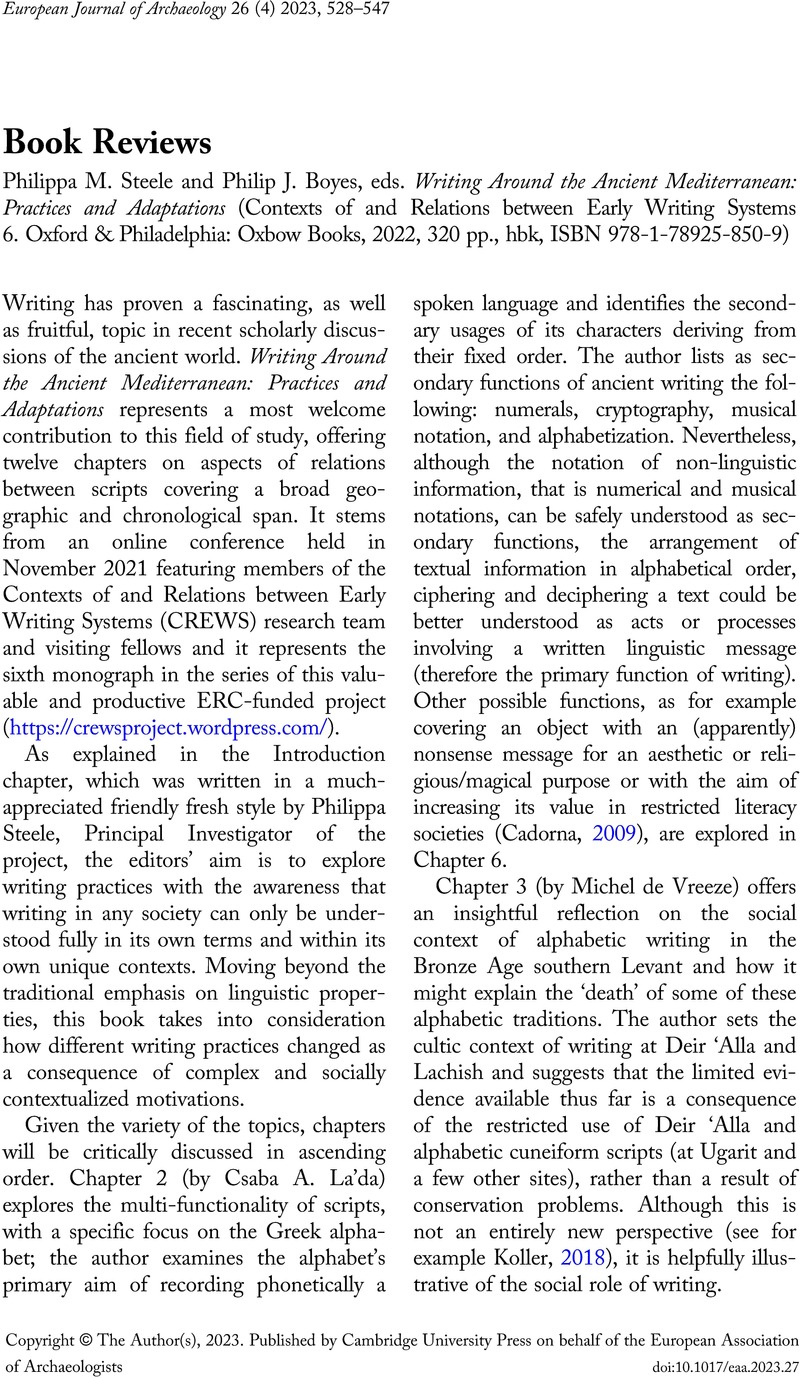No CrossRef data available.
Article contents
Philippa M. Steele and Philip J. Boyes, eds. Writing Around the Ancient Mediterranean: Practices and Adaptations (Contexts of and Relations between Early Writing Systems 6. Oxford & Philadelphia: Oxbow Books, 2022, 320 pp., hbk, ISBN 978-1-78925-850-9)
Review products
Philippa M. Steele and Philip J. Boyes, eds. Writing Around the Ancient Mediterranean: Practices and Adaptations (Contexts of and Relations between Early Writing Systems 6. Oxford & Philadelphia: Oxbow Books, 2022, 320 pp., hbk, ISBN 978-1-78925-850-9)
Published online by Cambridge University Press: 05 October 2023
Abstract
An abstract is not available for this content so a preview has been provided. Please use the Get access link above for information on how to access this content.

- Type
- Book Review
- Information
- Copyright
- Copyright © The Author(s), 2023. Published by Cambridge University Press on behalf of the European Association of Archaeologists
References
Brixhe, C. & Summers, G.D. 2006. Les inscriptions phrygiennes de Kerkens Dağ (Anatolie Centrale). Kadmos, 45: 93–135.Google Scholar
Corazza, M., Tamburini, F., Valério, M. & Ferrara, S. 2022. Unsupervised Deep Learning Supports Reclassification of Bronze Age Cypriot Writing System. Plos One 17(7). doi: https://doi.org/10.1371/journal.pone.0269544CrossRefGoogle ScholarPubMed
Decorte, R.P-J.E. 2017. Cretan ‘Hieroglyphic’ and the Nature of Script. In: Steele, P.M., ed. Understanding Relations Between Scripts: The Aegean Writing Systems. Oxford: Oxbow Books, pp. 33–56.CrossRefGoogle Scholar
Dickey, E. 2017. Word Division in Bilingual Texts. In: Macedo, G. & Scappaticcio, M.C., eds. Signes dans les textes, textes sur les signes (Papyrologica Leodiensia 6). Liège: Presses Universitaires de Liège, pp. 159–75.Google Scholar
Koller, A. 2018. The Diffusion of the Alphabet in the Second Millennium bce: On the Movements of Scribal Ideas from Egypt to the Levant, Mesopotamia, and Yemen. Journal of Ancient Egyptian Interconnections, 20: 1–14.Google Scholar
Olivier, J.-P. 2007. Édition holistique des textes chypro-minoens. Pisa-Roma: Fabrizio Serra Editore.Google Scholar


